Sights
Sights in the area.
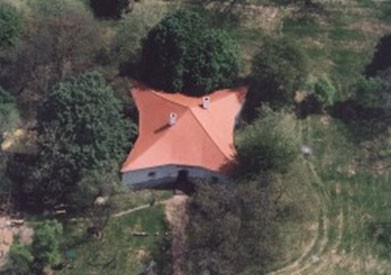 |
Balatonszentgyörgy (15 km)
Csillagvár (Star Castle): the hunting castle of the Festetics counts, situated on a wooded hill side in the western corner of Lake Balaton. The star-shaped building is unique all over the world. In the central room of the roofed castle, there is a thirty meter deep well, rooms for the captain, for the guards and for resting, a smoky kitchen, etc. Another attraction here is a medieval waxwork exhibition, a lifelike representation of everyday life in the past.
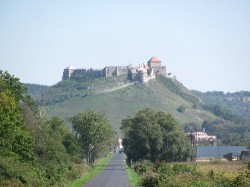 |
Sümeg (25 km)
Sümeg Castle: this castle, extending in a north-south direction, has the shape of an irregular polygon and is supplied with an inner tower; its substantial remnants provide a venue for children’s programs, castle festivals, medieval fights and medieval dinners all through the year.
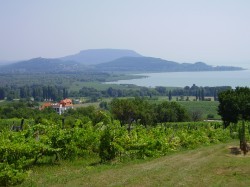 |
Balatonederics (20 km)
Africa Museum: Established by Dr. Endre Nagy, famous Africa hunter. The museum is a collection of his valuable and special trophies and Tanzanian ethnographic items.
 |
Keszthely (15 km)
Festetics Palace: Its construction started in 1745, and it took its present form between 1884 and 1887. The building consists of 101 rooms, and houses today a museum and a conference centre. Its most valuable room is the Helikon Library, built between 1799 and 1801, with original furniture and a stock of 86,000 books. Georgikon Manor Museum: in addition to the history of Hungarian agricultural higher education, it also features a wine-growing and coach exhibition with a cartwright’s and smith’s workshop. One of the most imposing pieces of the exhibition is a fully functional steam plough.
Doll Museum with folk costumes. Waxwork: nearly 40 famous personalities in contemporary dresses. Snail Parliament - aunique giant model. Torture museum. Radio and TV Museum. Balaton Museum: Neo-Baroque building, with a permanent exhibition on the upper level explaining the formation, fauna and flora of Lake Balaton and presenting the historical attractions of its vicinity. The lower level houses a Roman and medieval lapidarium, as well as a memorial room for the famous artist János Halápy. Marzipan Museum and Confectionery: located approx. 200 meters from the Festetics Palace, at 19 Katona József Street, where 100 marzipan works of the master confectioner can be seen.
Town Hall (Main Square): its foundations are from the 18th century, today it is Zopf style; it houses the Mayor’s Office.
Franciscan monastery and church (Main Square): the Franciscan monastery and church is a significant building complex on the square, which served as a border fortress in the Turkish times; its sanctuary accommodates the largest Gothic wall paintings in Hungary.
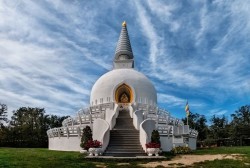 |
Zalaszántó (17 km)
Buddhist stupa: located in the Park of Human Rights, erected in 1992-93. A snow-white structure with a height of 30 m and a diameter of 24 m, inside with a 24 m long tree of life and Buddha relics. The gilded Buddha statue came here from South Korea. Its inauguration ceremony in 1993 was attended by the Dalai Lama, the exiled religious leader of Tibet.
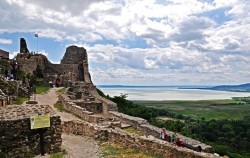 |
Szigliget (25 km)
Szigliget Castle: the settlement is accessible from highway 71 running along the north shore of Lake Balaton, by ship or by rail, as well as by bike on the bicycle path around the lake. Szigliget is still considered as one of the most beautiful areas at Lake Balaton. Its peak is 243 m high.
Esterházy castle, park of the Creators’ House: the classicistic castle was built in the early 1800s. This is where the Creators’ House of Writers was established in 1953. Near the castle, there are several manorial buildings, the majority of which are protected monuments.
 |
Zalaegerszeg (25 km)
Village Museum: Hungary’s first regional open-air ethnographic museum was established in the north-western part of Zalaegerszeg, next to a dead channel of the River Zala; it was opened in August 1968. Permanent exhibitions: Folk Architecture in Göcsej, Finno-Ugric National Park - Khanty and Mansi dwellings, folk costumes of the Carpathian Basin on dolls, exhibition of the potter family Czúgh. Csács Arboretum: located at the border of the town on an area of 84 acres, presenting all tree species to be found in Hungary, except poplar, and also accommodating an experimental site for 30-35 domestic and exotic tree species. Azalea Valley: once the home of acacias, the valley, which has a unique microclimate, was populated by this exotic species for experimental purposes, which resulted in an arboretum-like character, showing many features of mountainous regions. Azaleas flourish in the spring. Aquacity: Adventure and Slide Park in Zalaegerszeg located in the picturesque Gébárt Leisure Centre, 2 km from Zalaegerszeg. This water amusement park offers unmatched experiences and great fun as one of the biggest aquaparks in Central Europe, and the only such facility in Transdanubia. The 7.5-acre area contains more than 6,000 m2 water surface. Wave pool, baby and children’s pool, 3 jacuzzis, jumping pool, bathing pool and a 300 m long slow river - this is what visitors can choose from. The real attractions of the facility are the 18 slides. 13 giant slides are available for adults (54-120 m). The giant slides start from a 12 m high launch tower. At this point, there is also a view tower with a beautiful view on the city.
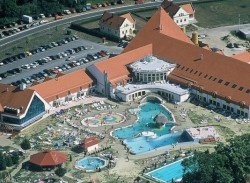 |
Kehidakustány (2 km)
Thermal and Fun Bath - The bath awaits its visitors with an overall water surface of 2,600 m2, 13 pools, and more than 2,000 free-of-charge deck-chairs, a sauna department, and free parking.
Opening hours:
Summer season (from 1 May to 4 October):
From Monday to Thursday, Sunday: From 8 a.m. to 8 p.m.
Friday, Saturday: From 8 a.m. to 10 p.m.
The Baroque Deák Mansion houses an exhibition paying homage to the “Sage of the Country”, with contemporary objects and documents evoking the life and work of Ferenc Deák. The so-called Turkish Well is a famous fountain in Nagykanizsa; it is an octagonal stone pool, which is said to be made from the stones of Kanizsa castle.
 |
Kis-Balaton (25 km)
Kápolnapuszta buffalo reserve: a centre for the presentation of buffalos, a native species in Hungary. This site plays an important role in the survival of this native Hungarian species and in the preservation of their genetic resources. The site offers to the visitors an interactive exhibition, telescopes, view points, resting areas, and an informational path presenting buffalos. The exhibition in the reception building showcases the fauna and flora of Kis-Balaton. In the stables, you can have a look at the one-time devices used by buffalo breeders, as well as contemporary photos. The buffaloes can be seen from spring to autumn, walking along a designated 1.5 km long path starting from the presentation area. There are altogether 200 buffaloes on the 30-acre area. In the winter, they can be seen in the stable. The reception building houses a shop for various publications and gifts, and refreshments can also be consumed here.
Kányavár Island: a 3 km long circular informational path, with the primary objective of presenting the rich bird life of Kis-Balaton. Its entrance is a peculiar wooden bridge, renovated in 2005.
Kis-Balaton house: located next to the road between Zalavár and Zalaszabar. In addition to presenting the wonders of nature, it is also aimed at illustrating historical and ethnographic implications, and it serves as a cultural centre as well. The chapel situated near the house, the Cyril and Methodius memorial column, as well as the archaeological explorations emphasize the values of the near and more distant past.
 |
Zalavár (20 km)
Ruins of the Saint Adrian Basilica: The church was built by Liutpram, archbishop of Salzburg, around 852-853, and this is where the relics of Hadrian (Saint Adrian) were placed. The finding, unique in Western Europe too, may have been the archetype of walkaround-type sanctuaries. After the excavation works, lasting for more than eight years, the ruins of the basilica were conserved and re-sanctified.
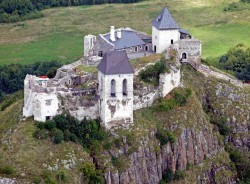 |
Rezi (20 km)
On 1 May 2014, the 23,000 square metre Dino and Adventure Park opened its doors. In addition to dinosaurs, there are bouncy castles, bouncy castles, a boating lake and a ropes course. Family and group discounts are available
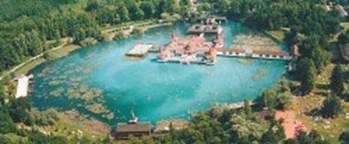 |
Hévíz (10 km)
Lake Hévíz is situated on a 60.5-acre nature conservation area, from which the lake itself takes 4.44 acres. In contrast to other hot-water lakes around the world, which are mostly located on volcanic clay or rock soils, Lake Hévíz is a turf-based spring lake. In the huge spring cave discovered in 1975, the karst waters of several cold- and hot-water springs are mixed together. From here, the mixed medicinal water flows through a narrow corridor, and then reaches the lake at a constant temperature of 38.5 °C. Due to its situation, the spring cave can only be visited subject to strict regulations, with the approval of the operator and the competent nature conservation authority, in compliance with the rules of cave diving.
